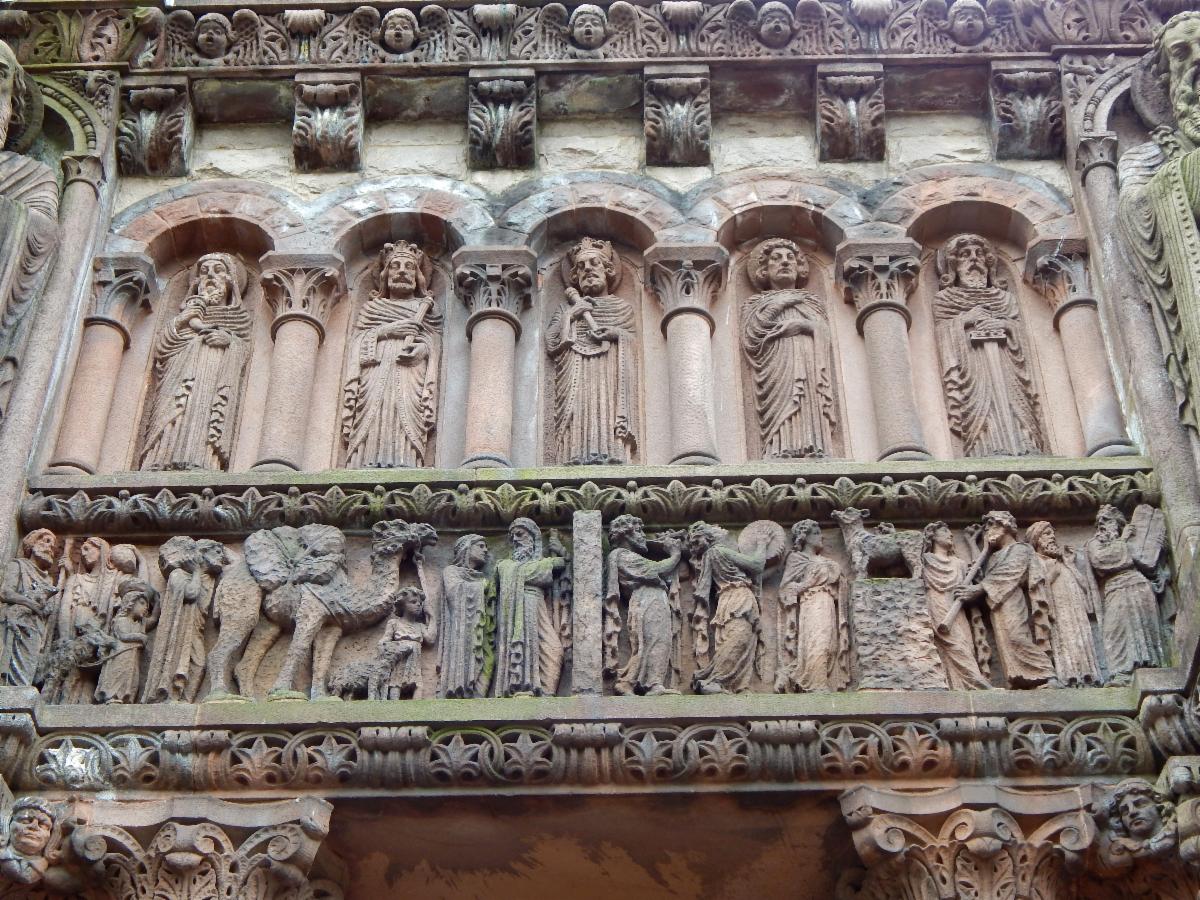 Dear Trinity Church and friends,
Dear Trinity Church and friends,
In December 1897, the last of the scaffolding was removed from the front of Trinity Church revealing the new Galilee Porch. Although envisioned by H. H. Richardson, it was not completed by the consecration of the building in February 1877, nor was it completed during his lifetime (he died in 1886). Richardson’s successor company, Shepley, Rutan and Coolidge realized his vision during the rectorship of Elijah Winchester Donald. It was Donald who selected the Old and New Testament scriptures as reference for the artwork. Today we most often refer to this structure as the West Porch.
Shepley contracted the stone carving company John Evans & Co. The company hired young Scottish sculptor Hugh Cairns who was recommended by Augustus Saint-Gaudens. It was Saint-Gaudens who applauded Cairns’ design and artistic execution of the porch sculptures. At some point during the process, chaos ensued. With the project nearly done, and architect Shepley abroad, Cairns severed his relationship with Evans & Co. and therefore halted his work on the porch. He even purportedly said he would finish the work for free so long as he didn’t have to work with Evans.
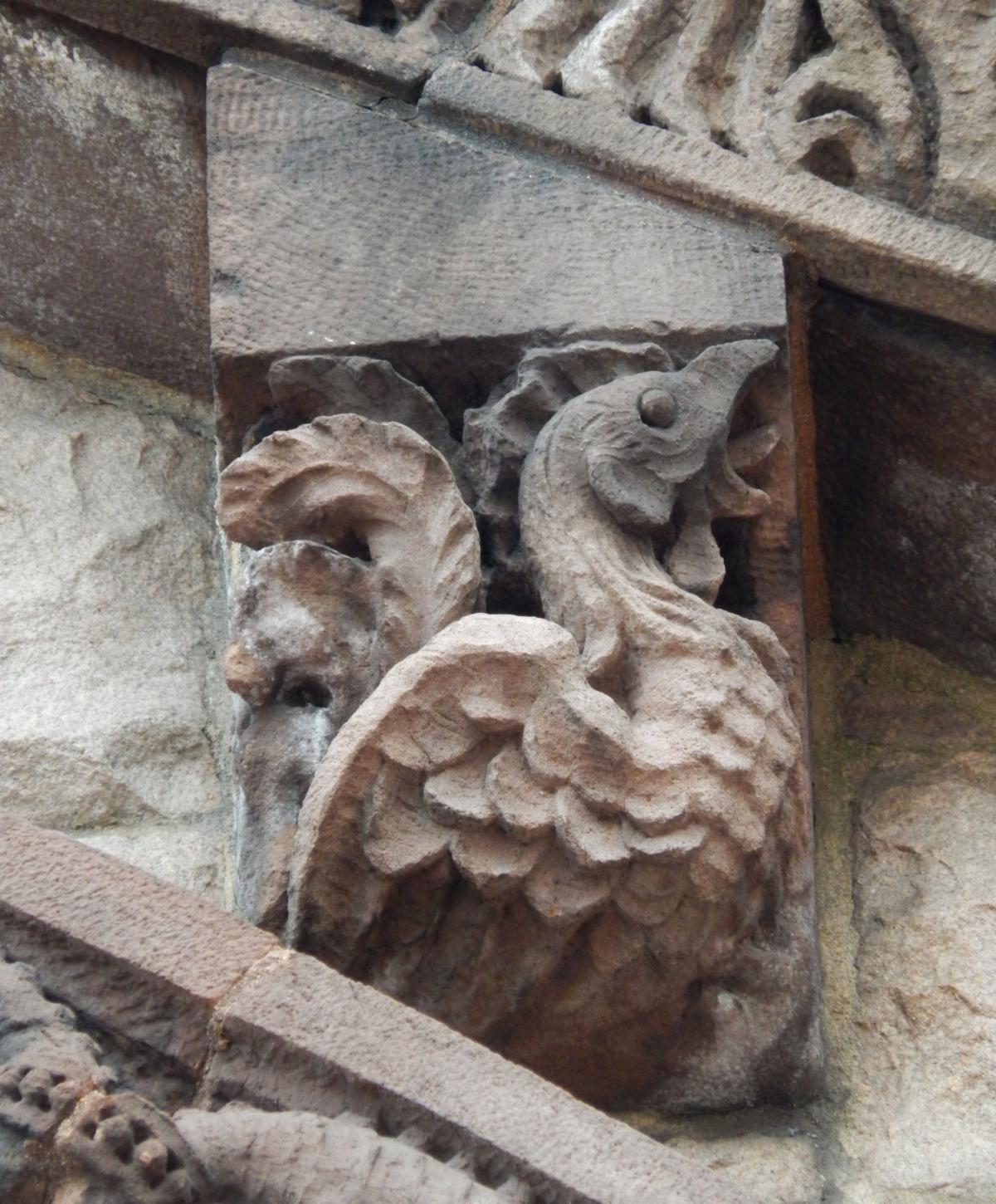 Upon Cairns’ departure from the project, the staging around the church remained in place, but work ceased on the porch. According to a September 12, 1897,Boston Globe article, “… the only signs of activity on Trinity Church in the meantime have been the activity of the elements in making the staging more unsightly each day and the tatters in the canvas more conspicuous.”
Upon Cairns’ departure from the project, the staging around the church remained in place, but work ceased on the porch. According to a September 12, 1897,Boston Globe article, “… the only signs of activity on Trinity Church in the meantime have been the activity of the elements in making the staging more unsightly each day and the tatters in the canvas more conspicuous.”
When Shepley returned from Europe, he reached out to one of the few men in the country capable of completing the work, respected architectural sculptor M. Domingo Mora.
In the 1897-1898 Trinity Church Year Book, Rector Donald notes several changes made to the porch’s decorated frieze since his report to the parish in 1896.
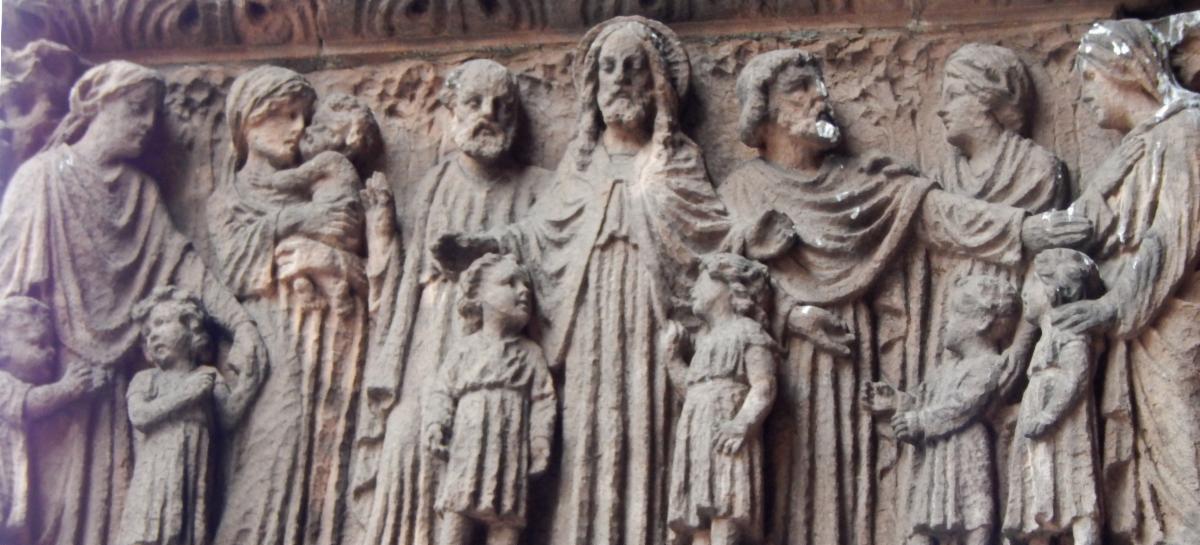 “These changes have been determined mainly by the exigencies of the sculptor’s art. For the “Delivery of the Sermon on the Mount,” we have substituted “Christ Blessing Little Children;” for “The Healing of Blind Bartimeus,” “The Triumphal Entry of Jesus into Jerusalem;” for “The Crucifixion,” “Christ before Pilate;” and for “The Appearance of Jesus to His Disciples on the Lakeside,” “The Appearance of Jesus to St. Thomas.” With these substitutions, the subjects of the total scheme are those described in the Year Book of 1896.
“These changes have been determined mainly by the exigencies of the sculptor’s art. For the “Delivery of the Sermon on the Mount,” we have substituted “Christ Blessing Little Children;” for “The Healing of Blind Bartimeus,” “The Triumphal Entry of Jesus into Jerusalem;” for “The Crucifixion,” “Christ before Pilate;” and for “The Appearance of Jesus to His Disciples on the Lakeside,” “The Appearance of Jesus to St. Thomas.” With these substitutions, the subjects of the total scheme are those described in the Year Book of 1896.
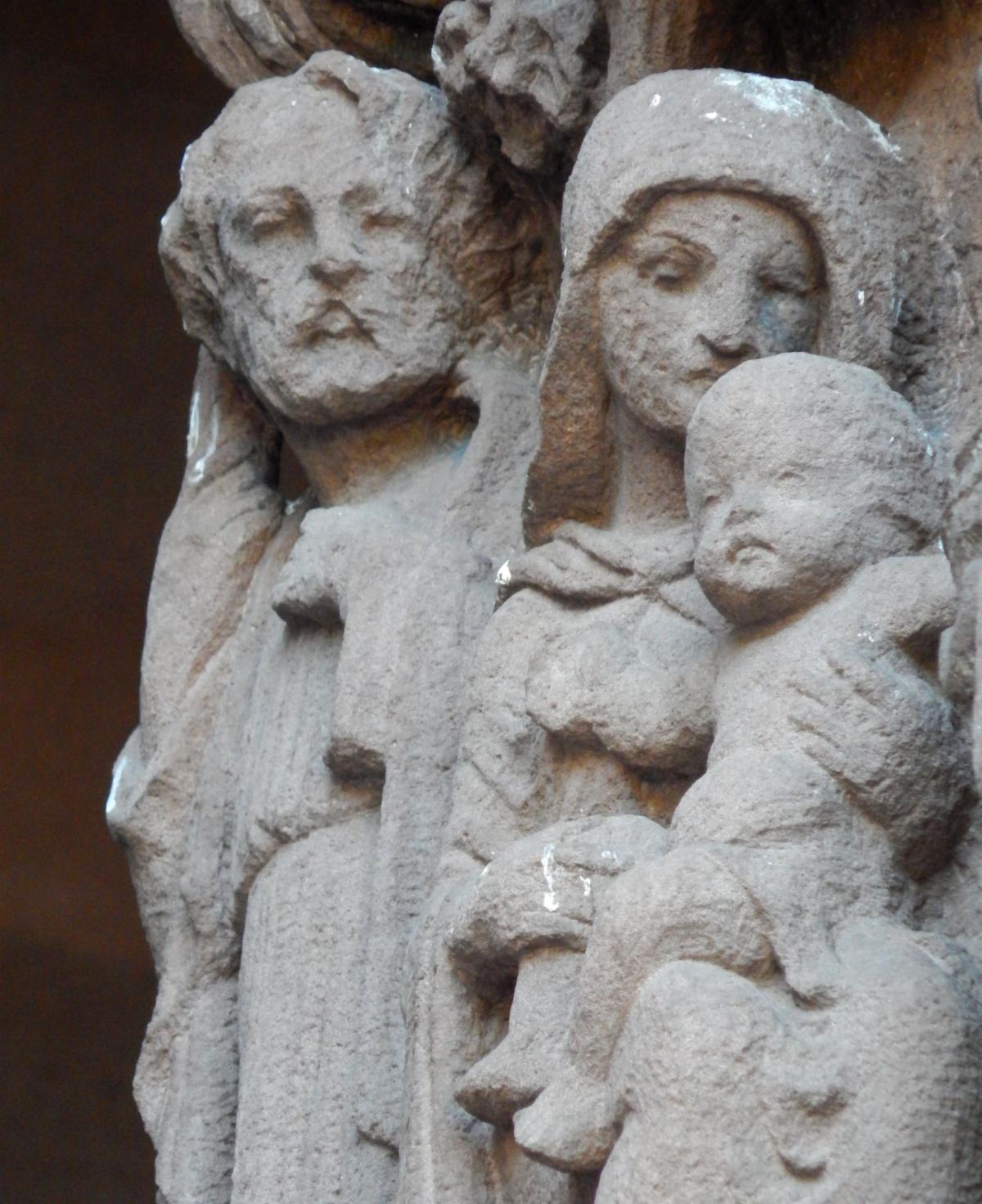 “What must have seemed to many people unnecessary delay in completing the sculpture of the Porch, is, in part, explained by Mr. Cairn’s inability to finish his models, owing to a change in his business plans and to new engagements. … under the direction of Mr. Shepley and Mr. Evans, the casts for the remaining portions of the frieze were modelled. M. Mora Domingo has exhibited a most commendable spirit in carrying out the architect’s designs, with rare patience meeting and overcoming the artistic difficulties which beset the initial stages of his task.
“What must have seemed to many people unnecessary delay in completing the sculpture of the Porch, is, in part, explained by Mr. Cairn’s inability to finish his models, owing to a change in his business plans and to new engagements. … under the direction of Mr. Shepley and Mr. Evans, the casts for the remaining portions of the frieze were modelled. M. Mora Domingo has exhibited a most commendable spirit in carrying out the architect’s designs, with rare patience meeting and overcoming the artistic difficulties which beset the initial stages of his task.
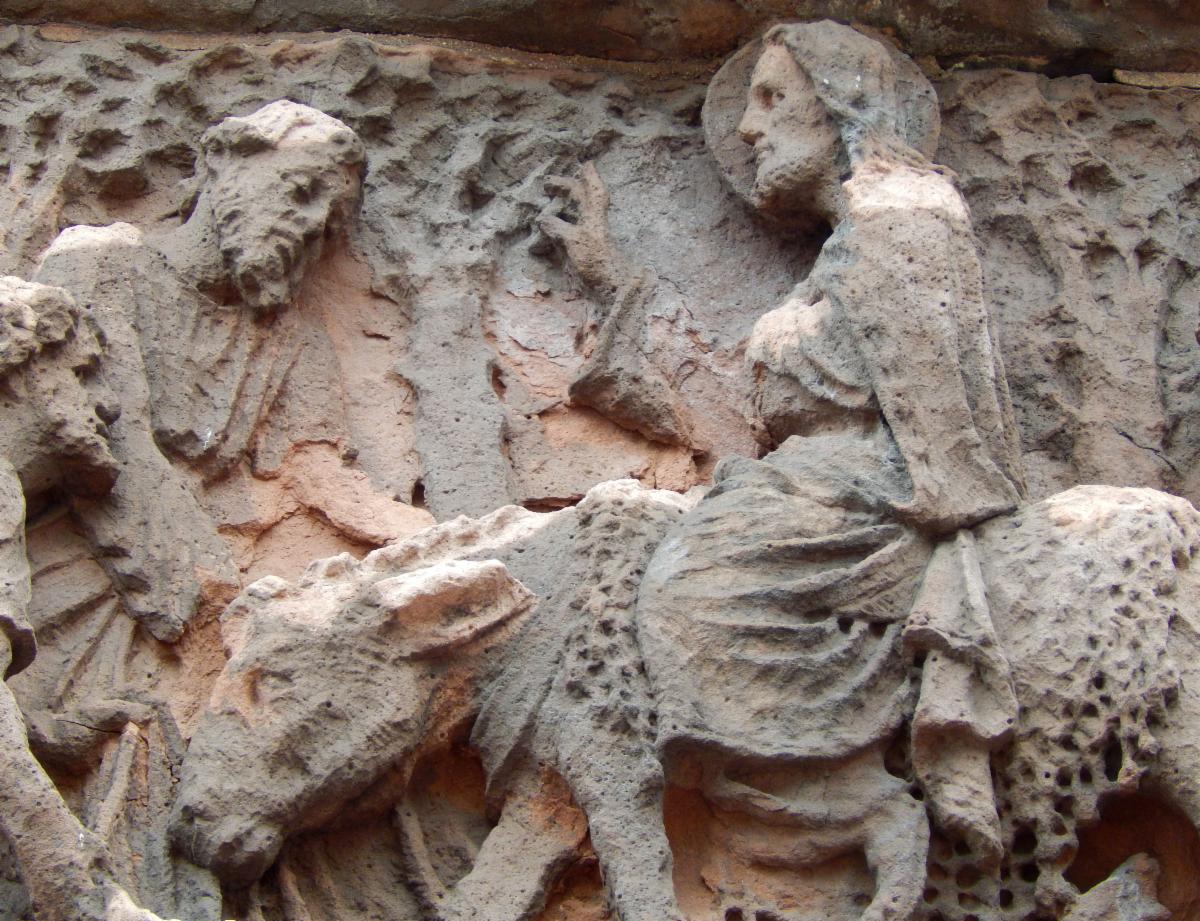 His work comprises the following panels of the frieze: “The Journey of Abraham,” “The Worship of the Golden Calf,” “The Two Visions of Isaiah,” “The Baptism of Christ,” “Christ Blessing Little Children,” “The Prodigal Son,” “The Triumphal Entry of Christ into Jerusalem,” “Christ before Pilate,” “The Appearance of Jesus to St. Thomas,” “Saul on the Road to Damascus,” and “Paul Preaching on Mars Hill.” With these exceptions, the sculpture of the porch is the work of Mr. Cairns.”
His work comprises the following panels of the frieze: “The Journey of Abraham,” “The Worship of the Golden Calf,” “The Two Visions of Isaiah,” “The Baptism of Christ,” “Christ Blessing Little Children,” “The Prodigal Son,” “The Triumphal Entry of Christ into Jerusalem,” “Christ before Pilate,” “The Appearance of Jesus to St. Thomas,” “Saul on the Road to Damascus,” and “Paul Preaching on Mars Hill.” With these exceptions, the sculpture of the porch is the work of Mr. Cairns.”
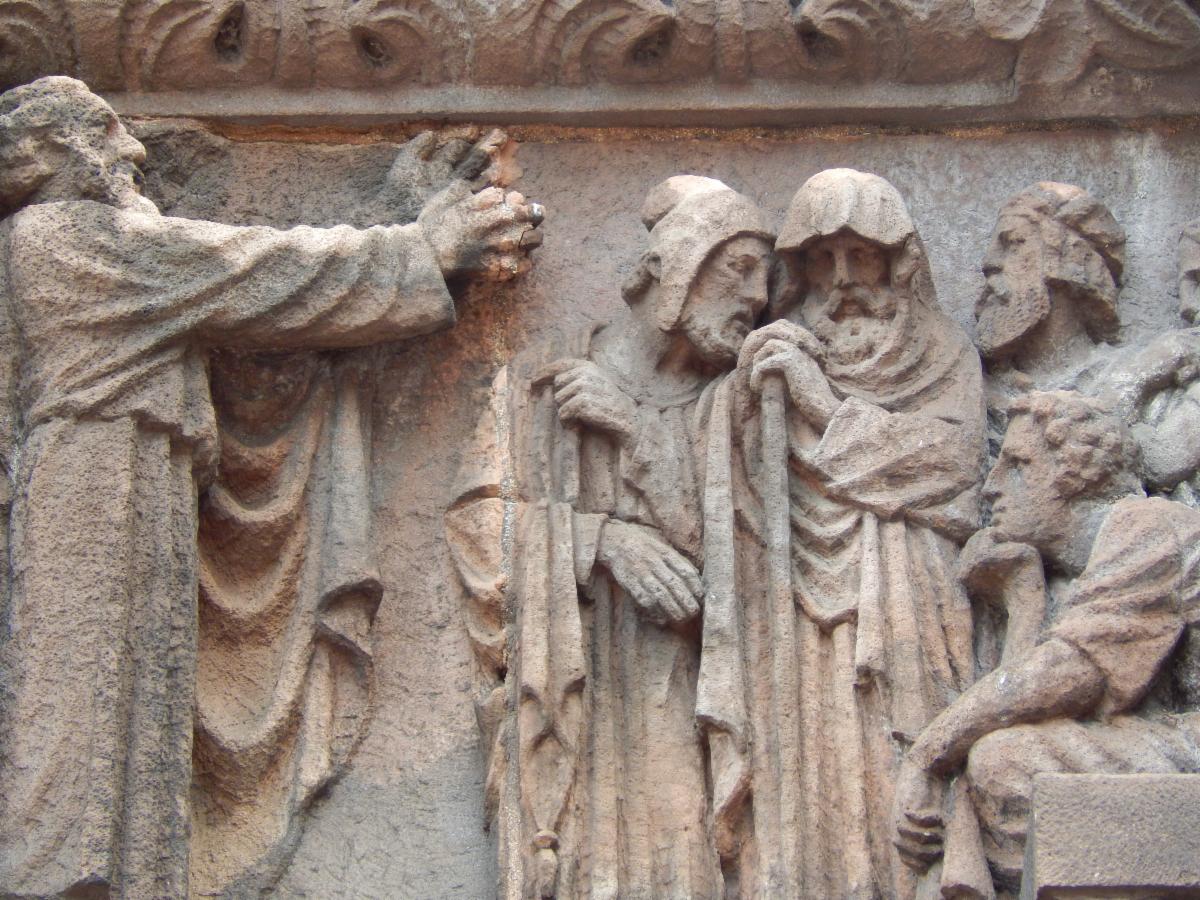 There remains the tenth heroic figure and the frieze contiguous to it to be carved. No decision as to the subjects for these has yet been reached by the Committee under whose supervision the work has been done.”
There remains the tenth heroic figure and the frieze contiguous to it to be carved. No decision as to the subjects for these has yet been reached by the Committee under whose supervision the work has been done.”
Indeed, at the time of Donald’s writing, there was no decision made but there had been great debate. It was well known that many in the parish wanted to depict Phillips Brooks, beloved former Rector of Trinity Church and Bishop of Massachusetts, recently deceased in 1893. However, given that Saint-Gaudens was already at work on a sizeable statue honoring Brooks, others thought Bishop White, representing early episcopacy in America, should fill the space.
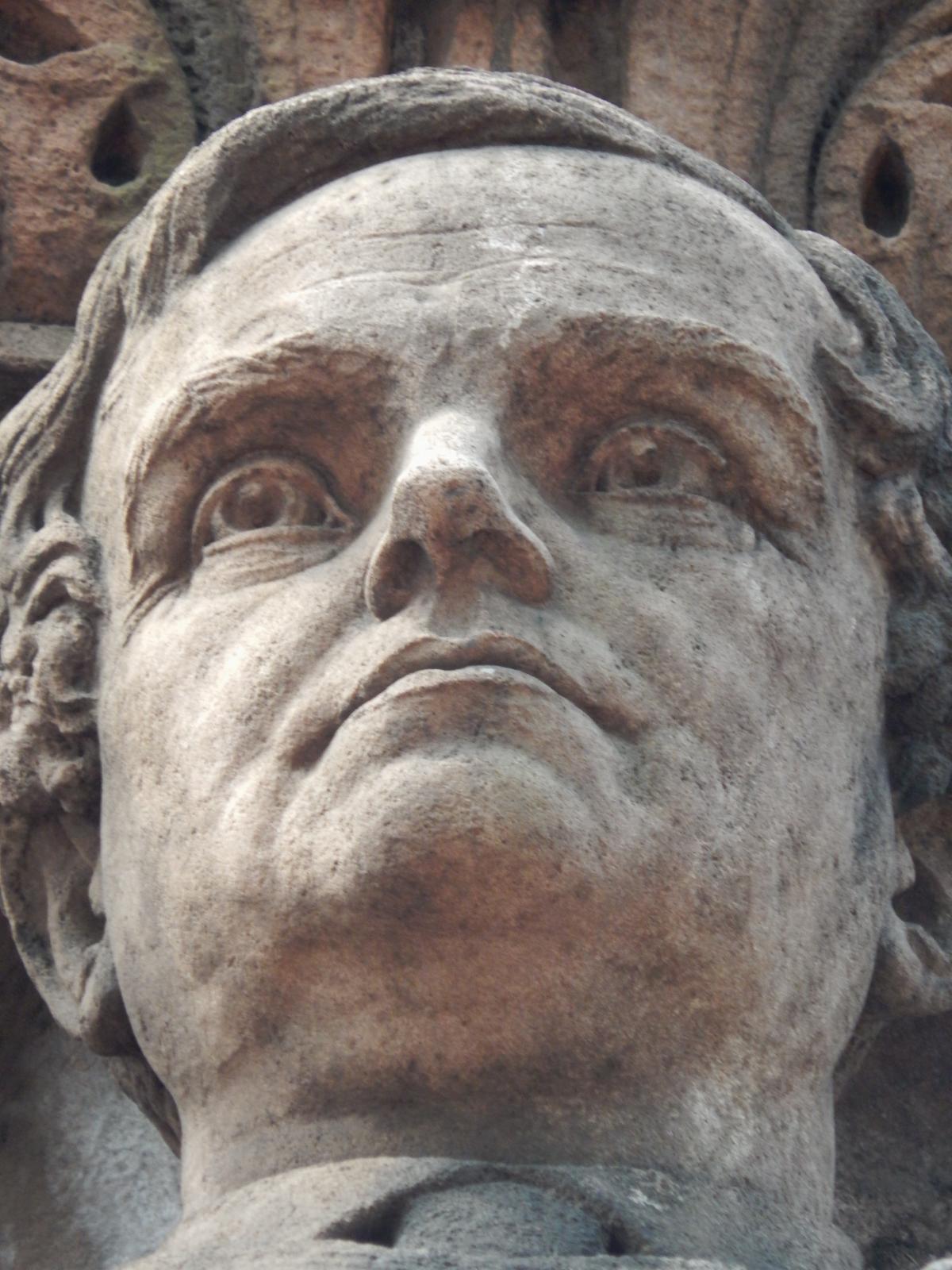 Over time those in favor of Brooks held sway. In summer of 1926, carver Benedict Cipollini of Evans & Co. began work on the stone working from a model of Brooks by Hugh Cairns.
Over time those in favor of Brooks held sway. In summer of 1926, carver Benedict Cipollini of Evans & Co. began work on the stone working from a model of Brooks by Hugh Cairns.
Throughout the evolution of the porch from Richardson’s conception to the collaboration between Shepley, Rutan and Coolidge with Evans & Co, and of course the artistry of Cairns and Mora, it is clear that Donald was a driving force in the porch’s execution and completion. Ever humble, Donald did not take full credit. Donald looked to the future, writing in the the 1897-1898 Year Book:
“May this Beautiful Gate of the Temple remind us and our children that the God to whose glory the Temple was built must be worshipped “in the beauty of holiness.””
Until next time,
Cynthia
Sources and Further Reading (and Listening)
Magazines and Newspapers
A New Sculptor At Work on Mr. Cairns Friezes at Trinity Church. Boston Daily Advertiser. September 13, 1897. P.5.
Completing the Trinity Church Sculptural Decorations. The Boston Herald. September 19, 1926. P.84.
Statue of Phillips Brooks to be Unveiled this Week. Boston Globe. September 20, 1926. P.15.
The Galilee Porch of Trinity Church, Boston. The Inland Architect and News Record Volume 31 Number 3. May 1898. P.32-3
Trinity Church Porch. Completion of Several New Sections of the Sculptures Illustrating Biblical History. Boston Evening Transcript. December 27, 1897. P.6.
Work on Trinity Porch. Boston Globe. September 12, 1897. P. 5.
Books
Trinity Church in the City of Boston Year Book 1897-1898
People

